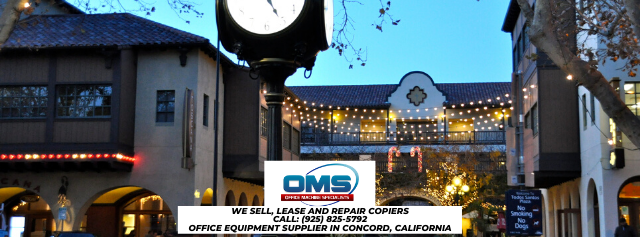Office Machine Services and Sales Solutions
History of Pittsburg, California
Situated at the meeting point of the Sacramento and San Joaquin rivers, Pittsburgh is both a city of change and hope. Our town’s earliest documented existence starts in the year 1839 when the Mexican government gave Jose Antone Mesa and Miguel Jose Garcia approximately 10,000 acres. Soon afterward the little town was called Pacific New York, probably because the man who laid out the area, Colonel J.D. Stevenson, was a New York resident. This area soon became known as New York Landing, and the fishing and canning industries thrived. The town was called Black Diamond in 1868, after the discovery of coal in the hills three miles south of the settlement.
In 1906 Columbia Geneva Steel opened for business, and by popular vote on February 11, 1911, the name was changed to Pittsburg, after the steel industry ‘s eastern birthplace but for simpler spelling without the “H.”
Camp Stoneman was erected in 1942. This was to have a huge effect on the town and its development. Camp Stoneman was the last contact with the United States for thousands of GIs who have gone to fight in the Asiatic-Pacific operations during World War II. The camp was demolished in 1954, and the land was added for commercial and residential construction in the City of Pittsburg.
Pittsburg has developed from a declining village to a manufacturing area into an affluent city with landscaped parks, leisure facilities, shopping centers, affordable housing, and planned business and commercial growth.
Pittsburgh is striding into the future, more prosperous each day than the previous one. New homes, old houses renovated, new businesses, a reviving historic district are all signs of even better times to come. In addition, the city government of Pittsburg has expanded the parks system, improved the infrastructure, increased trade and jobs, enlarged the Marina, and constructed a new Civic Center to carry it into the 21st century. All this for the taxpayer, at no additional cost. The developments must continue to work together.
For its public schools, Pittsburg takes great pride. She has just completed an eighty-five thousand-dollar grammar school and is using the newest techniques in every line to improve the children intellectually, physically, and esthetically. The pupils are taught dance, sports, folk dancing, and military training. Thus their growing characters are rounded out in a way that is equal to the results achieved in much larger towns. A trained nurse, who visits the different classes daily, whose average daily attendance is 850 pupils, is watching the physical welfare of the pupils carefully.
Turning to the numerous industries in Pittsburg, we note that one of the earliest developed plants was that of the Redwood Manufacturers Company, which has a capitalization of one million dollars and operates one of the largest woodworking plants in the world, producing redwood and pine lumber finished products which are brought in by coastal vessels from the great forests of the northern coast. The company carries even significant stocks of northern fir and other trees. The Redwood Manufacturers Company’s manufacturing facilities are second only to their immense stock, and their product finds a ready market in nearly every civilized community in the world where wood products are used.
Pittsburg residents are justifiably proud of Columbia Steel Company’s new factory. There have been several changes since the institution was established, about seven years ago, the organization recently made extensions that will increase its capacity by fifty percent. The Columbia Steel Company has secured the bulk of the steel casting trade on the Pacific Coast by its modern and efficient manufacturing methods, and by continuously improving its plant and maintaining a high level of skill among its employees, five hundred of whom are employed, there is no prospect of anything but progress and advancement.
Nearly all castings of steel were manufactured in Eastern foundries a few years ago and transported to the coast, resulting in a great deal of cost and delay for the customers. Today faster delivery and superior quality can be achieved at lower prices than ever before. As a result, the entire Pacific Coast has gained and the companies that use this commodity have been greatly stimulated.
By Geraoma – Own work, Public Domain, https://commons.wikimedia.org/w/index.php?curid=8782801
- Black Diamond Mines Regional Preserve
- Small World Park
- Buchanan Park
- Pittsburg Historical Society
- Port Chicago Naval Magazine National Memorial
- Dow Wetlands Preserve
- Highlands Ranch Park
- Central Park
- Stoneman Trailhead
All of these wonderful landmarks are located just a short distance from our location at 1091 Shary Circle in Concord, California! Stop by for a visit anytime!
